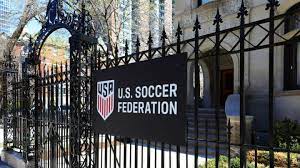June 11 – The calendar wars are over. Sort of. United States Youth Soccer (USYS), American Youth Soccer Organization (AYSO), and US Club Soccer have finally landed on their new age group formation cycle: August 1 to July 31, starting with the 2026-27 season.
This isn’t just administrative shuffling – this is youth soccer’s biggest organizational shift since…2016, all of nine years ago.
The decision comes after what the organisations diplomatically call “extensive review and discussion.” Translation: months of heated debate, competing data sets, and pressure from parents, coaches, and clubs across the country who’ve been demanding clarity on how their kids get grouped for competition.
The driving force? School alignment. The new cycle aims to keep players competing alongside their actual classmates rather than the arbitrary birthday lottery that’s frustrated some but not all families.
US Youth Soccer CEO Tom Condone frames it as a player-first policy: “At US Youth Soccer, our mission is to support the development of every player. After careful collaboration with our partners and listening to our membership, we believe this shift to an August 1 player formation cycle better aligns with school calendars, supports social and individual needs, and ultimately enhances the youth soccer experience for families across the country.”
The scope is comprehensive. Every USYS league and Cup competition falls under the new timeline – National Championships, Presidents Cup, National League. No exceptions, no grandfathering, no half-measures.
This represents the practical implementation of U.S. Soccer’s policy shift that gave federation members control over their own age group registration rules. Each organisation can now chart its own course rather than following a one-size-fits-all mandate from the top.
U.S. Soccer has rolled out digital tools to help parents navigate the new system.
The timeline gives everyone breathing room. Implementation doesn’t kick in until 2026-27, allowing clubs, leagues, and families to adjust their planning cycles accordingly.
US youth soccer just got a little less complicated. Whether it stays that way remains to be seen.
Contact the writer of this story at moc.l1749736501labto1749736501ofdlr1749736501owedi1749736501sni@r1749736501etsbe1749736501w.kci1749736501n1749736501

